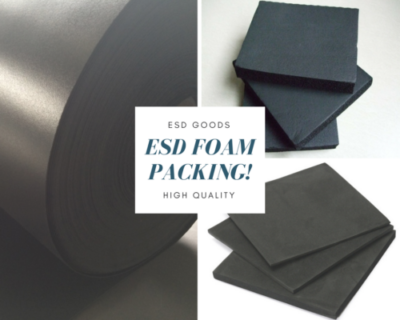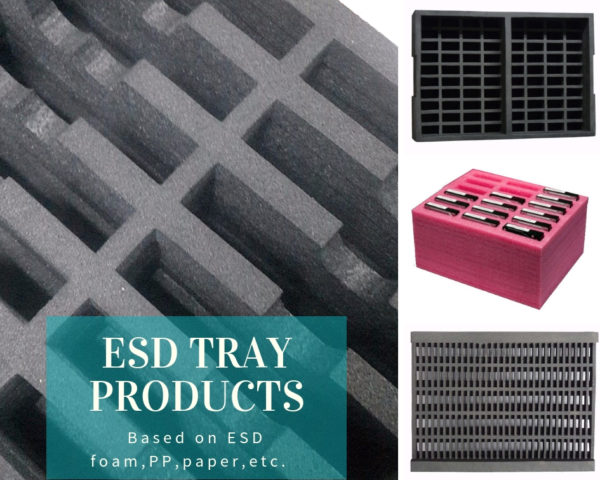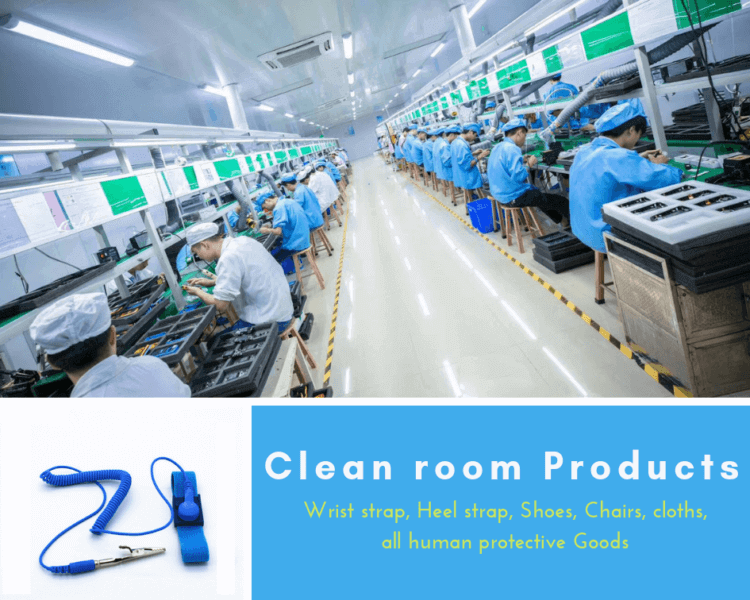Anti Static Foam & ESD Foam & Conductive Foam Guide for Electronic Packaging

Anti Static foam is quite popular among packaging and electronics users due to their anti-static, lightweight, flexible, protective and potentially packaging properties. They are a good choice for users in electronic, industries, mainly for providing static protection without damaging electronic parts.
There are many types of Antistatic foam, the more common anti-static PE foam, anti-static EVA foam, anti-static EPE foam and anti-static PU foam and other four, at the same time, because the use of electrostatic foam and corresponding packaging needs are not the same, electrostatic foam can be divided into conductive and anti-static two different static indicators range. Conductive mainly refers to the resistance value of 10^3-10^5, while anti-static mainly refers to the resistance value of 10^6-10^9. Because of different product requirements and choose different electrostatic value.
We will discuss on the ESD foam as well as the use of static foam in the following five sections, which foam is currently the most popular on the market.
Content
- Anti Static Foam vs ESD Foam vs Conductive Foam
- Anti Static Foam Shapes
- What to Consider When Choosing Anti Static Foam
- Best Anti Static Foam Supplier
Anti Static Foam vs ESD Foam vs Conductive Foam
What's Anti Static Foam
Anti Static Foam also called ESD Foam, which is a specialty foam designed for the package, store, transportation of electronic parts and equipment. Its unique properties allow the foam to slowly dissipate electro-static charges given off by neighboring components, the component itself or even human handlers during the shipping process. Anti-Static foam is excellent for cushioning sensitive circuit boards, computer chips and other electronics.
Anti Static Foam Types:
There are four main types of foam in the market - PE foam, EVA foam, EPE foam and PU foam. Each type of foam has its own advantages and disadvantages and appeals to a slightly different demographic. Let's take a quick look at each type of anti-static foam before we find out which is the most popular based on popular search results on the internet.
Anti Static PE foam
Antistatic polyethylene foam is initially produced in the form of continuous sheet, the product is based on polyethylene material with the addition of foaming agents and conductive agents, etc., through the crosslinking and foaming of permanent antistatic polyethylene foam, can be made into Antistatic foam rolls, foam sheets, foam trays, foam lining, foam tape, foam shock absorbers, etc., its regular color is black, closed-cell structure, no odor, the regular density is 45kg/m3, 67kg/m3, the products can meet a variety of anti-static packaging and protection needs.
Anti Static EVA foam
Anti-static EVA foam is made of PE and ethylene vinyl acetate and other additives such as foaming agent by fixed molding foam, and the size of EVA foam is fixed.EVA foam is also a permanent anti-static foam, can be made into anti-static foam rolls, foam sheets, foam trays, foam lining, foam tape, foam shock absorbing sheet, etc., anti-static EVA foam is closed cell structure. Compared with PE foaming material, the difference is that EVA foaming material has odor, anti-static EVA foaming material density will be higher than PE foaming material, regular in 85kg/m3, the color of regular products not only black, but also increased blue, red, white, etc., and with the increase of customer demand, the types of regular colors are also slowly increasing.
Anti Static EPE Foam
Anti-static EPE foam is expandable polyethylene foam, is a kind of non-cross-linked closed cell foam. It has anti-static properties by adding anti-static liquid, and the regular color is pink. The regular size is 610*2800mm, the surface antistatic value is 10^8-10^11.
Anti static PU foam
Antistatic polyurethane foam is made from polyurethane (PU), an open-cell foam whose foaming process involves the addition of conductive fillers and subsequent cross-linking. During the foaming process, the conductive fillers in the foam form an internal network that creates an antistatic path. This design controls static leakage.
Antistatic PU foam can be customized in size to meet specific customer requirements, making it suitable for packaging a wide range of general-purpose electronic components. Importantly, the antistatic properties of the foam are not affected by post-processing procedures.
Antistatic PU foam has an open cell structure and conductive padding to control static electricity and ensure the safe handling and transportation of sensitive electronic components.
What's Conductive Foam
There are two types of foam in the market called conductive foam. The first type is similar to anti-static foam products, but the only difference is that the foam has a surface resistance of 10^3-10^5 instead of 10^6-10^11, Conductive Foam is able to quickly conduct the charge from the surface of the electronic product to the ground or other objects to avoid damage to the electronic product.
The other type is made of polyurethane foam plated with copper and nickel. Compression is 25% to 75%. The temperature range is between -10 and 85 °C.
Anti Static Foam Roll
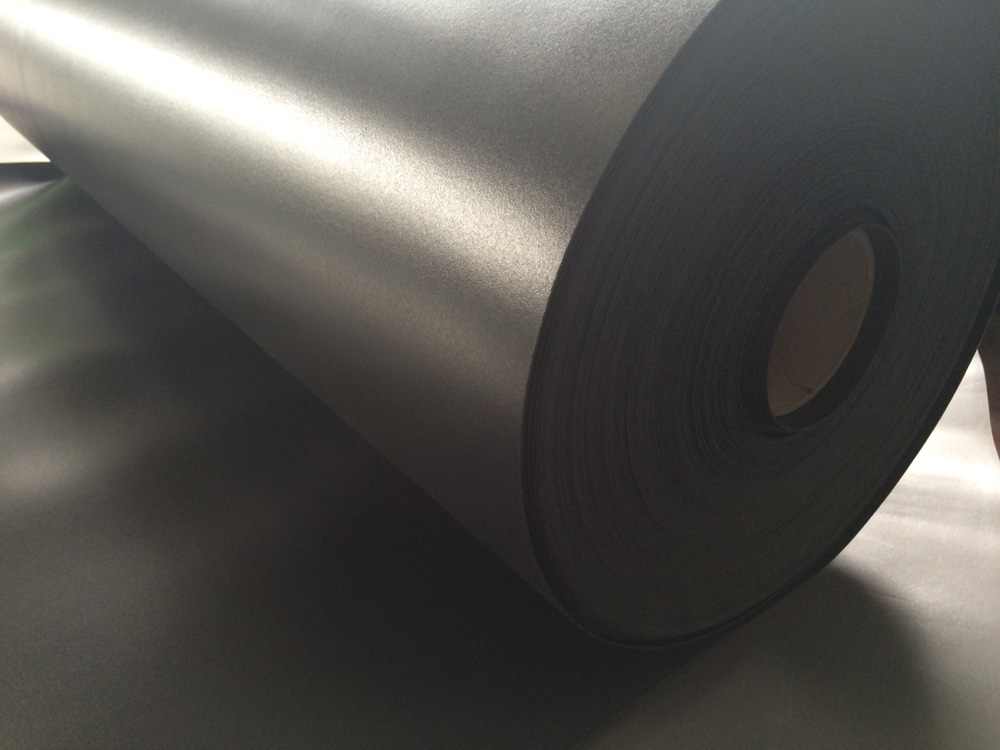
ESD PE Foam Roll and a few ESD EPE Foam Roll is original Roll Shape, which produced by continuously foaming. The anti-static EVA foam rolls seen on the market are made by splicing and rolling, although by splicing, but the splicing effect is very good, does not affect the use of the overall foam roll, also accepted by many customers.
Anti Static Foam Sheet
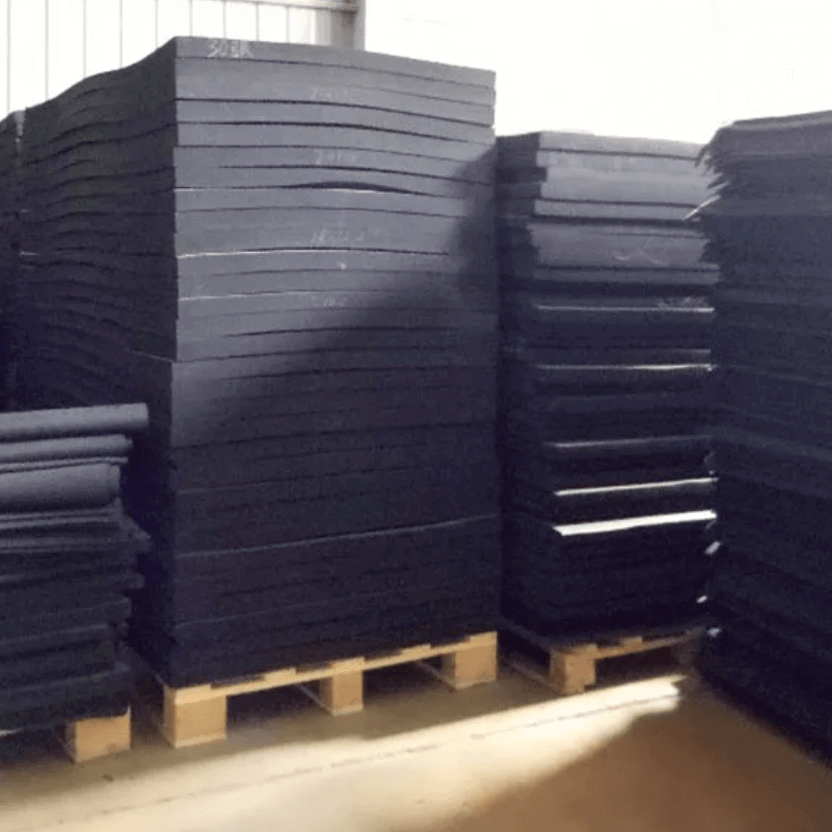
Anti Static EVA Foam, Anti Static EPE Foam and Anti Static PU foam are all original foam sheet by foaming in a fixed Container. And For the single thickness of EVA Foam can be 50mm, EPE Foam thickness is up to 80mm, and PU Foam can be 50mm.
For the Anti Static PE foam, the Max. single thickness is around 6 or 7mm, so usually be laminated into the specific thickness, which also can be up to 100mm.
Anti Static Foam Tray
All four types foam can be made in to the anti static foam tray as requirements. Because the foam hardness and colors are different.
Anti static Foam Box
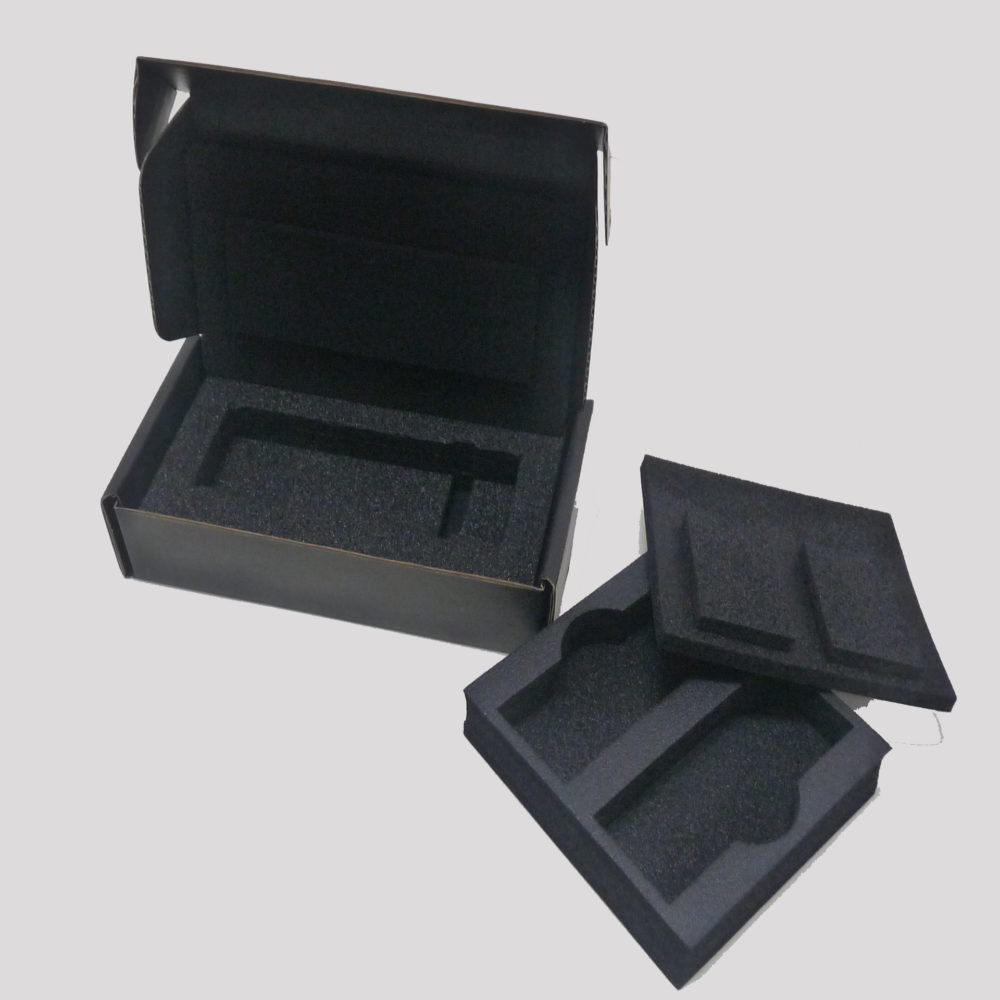
Anti static foam box can be made from the four types foam.
Anti Static Foam insert
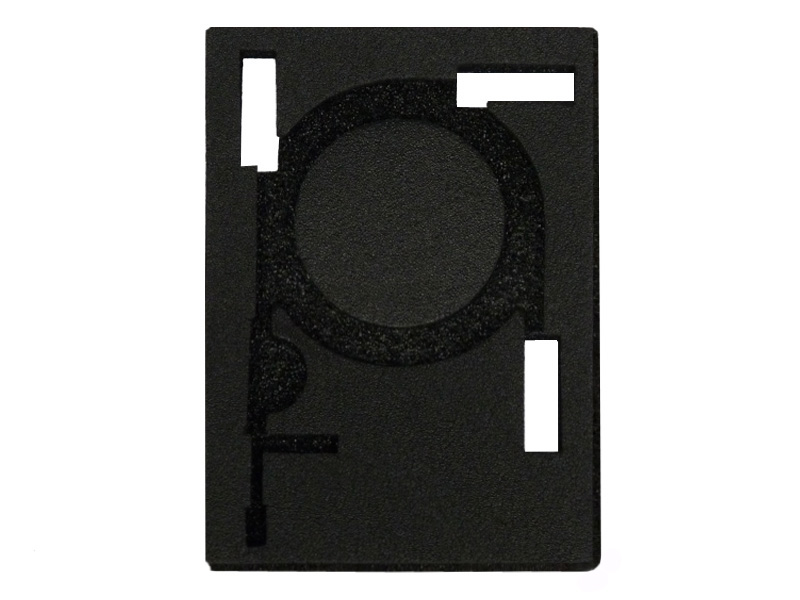
Anti-static foam insert is often precisely cut using molds or dies to match the shape and size of the components they are meant to protect. These custom-fit foam inserts are then placed inside various types of ESD (Electrostatic Discharge) containers, such as ESD cardboard boxes, ESD corrugated boxes, and PP (polypropylene) boxes. This combination of anti-static foam inserts and ESD containers provides comprehensive protection for sensitive electronic components during storage and transportation.
Anti Static Foam Tape
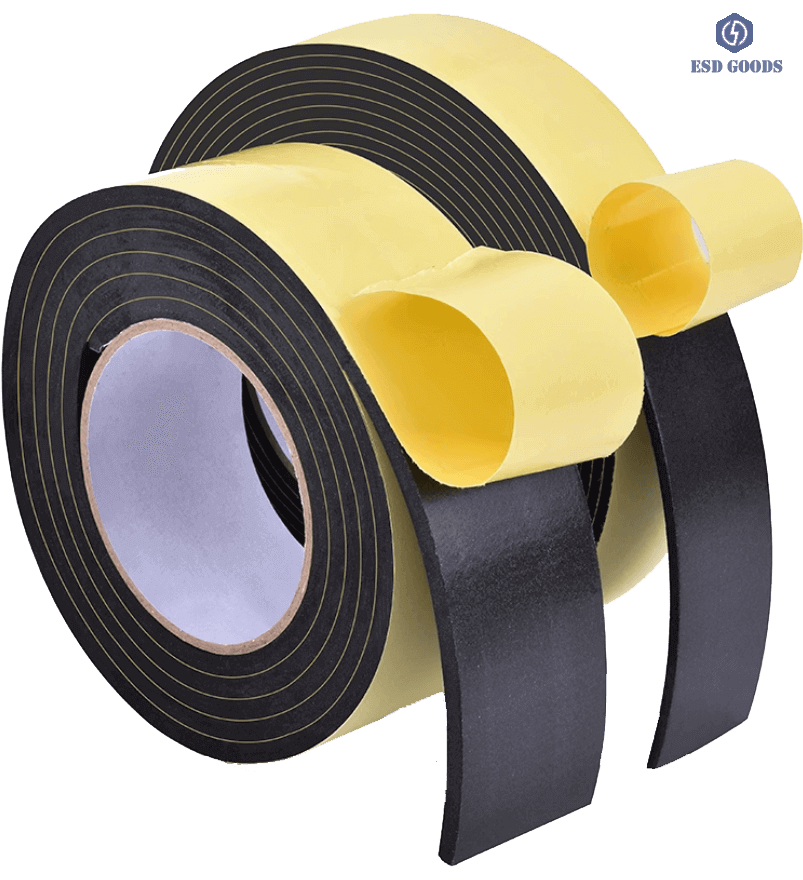
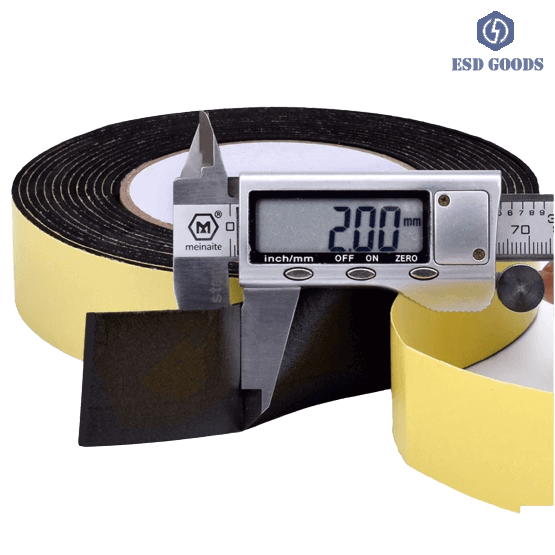
Anti-static foam tape is made from a foam material that has been impregnated with conductive or dissipative additives. These additives help to control the flow of static electricity by providing a pathway for the electric charges to dissipate, thereby preventing the buildup of static charge. The tape is often used for packaging, cushioning, and securing electronic components, as well as for creating grounded surfaces in workstations or manufacturing areas where static electricity could be a concern.
Current anti static foam tape is PE foam, PU foam and EVA foam. Actually all four types foam can be make into the anti static foam tape. But there will be no MOQ for anti static PE foam because of the original roll shape. For EVA Foam, there will have MOQ of 2000-3000sqm.
What to Consider When Choosing Anti Static Foam
The ESD Foam trends are diverse and cater to different preferences and needs. Antistatic foam have become popular among electronics packaging users due to their convenience and ease of use. However, with so many options available in the market, it can be challenging to choose the best one that meets your needs. Here are some factors to consider when choosing the anti static foam:
Here is what you need to consider when choosing the anti static foam:
- Anti Static Foam Material: Different anti-static foam has different hardness, foam surface resistance, color and appearance, because of different raw materials, different processing methods, different foam forms, presenting different effects, so you need to choose different foam materials according to the scene used, packaging needs.
- Anti Static Foam Quality: Look for a reputable supplier such as ESDGoods that uses high-quality raw materials for their products to ensure their safety and avoid problem such as not protective your electronics well. also need to check the quality of the ESD Foam that you choose to make sure it serves you for the time you are using it. Check online customer feedback and suppliers’ technologies to ensure that the supplier you’re considering is reliable.
- Anti Static Foam Electrostatic Discharge (ESD) Protection: Antistatic Foam Electrostatic Discharge (ESD) Protection: The primary use of these antistatic foams is to protect electronic components from electrostatic discharge (ESD). They help dissipate any static charge that could damage or interfere with delicate electronic components. Because different foam materials have different surface resistances, conductive foam has a resistance value of 10^3-10^5, black anti-static foam has a resistance value of 10^6-10^9, and there are also pink static dissipative foam materials with a resistance value of 10^8-10^11, so according to the needs of their own products to choose the right antistatic foam, while ensuring that in the use of the period of time is to have anti-static properties. So according to their own product needs to choose the right product, at the same time to ensure that in the use of the period is anti-static properties, so as to avoid the disappearance of anti-static properties and damage to products.
- Anti Static Foam Price: ESD Foam can vary in price depending on the different suppliers. It’s important to choose a ESD Foam that fits your budget, but also Protect your electronics well.
- Anti Static Foam Customization: anti static foam are highly customizable in terms of size, shape, and compartmentalization. They can be tailored to fit specific components, and offer excellent cushioning and shock-absorption properties. They cradle and protect sensitive components during transportation and storage, reducing the risk of physical damage.
- Anti Static Foam Compliance: All the four types antistatic foam comply with industry standards and regulations related to ESD protection, such as ANSI/ESD S20.20. and they are suitable for use in cleanroom environments, where maintaining a static-free environment is critical.
Best Anti Static Foam Supplier
ESDGoods is offering a partnership opportunity with any electronic retailers and distributors who want to be the market leader in the ESD Packaging industry!
As proof of reliability, ESDGoods has partnered with multiple distributor partners and retailers from across continents, proving our reliable service to distribute to wherever a ESD Foam retailer is located. Not to mention, ESDGoods offers a multi-tiered partnership program that a retailer can adjust according to their internal requirements. However, even our basic package already includes the essentials a ESD foam retailer needs to get their sales up and running. Let ESDGoods be the spectacular ESD Foam supplier that a distributors and wholesalers ever needs!

